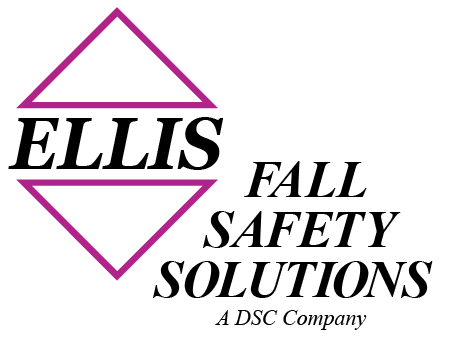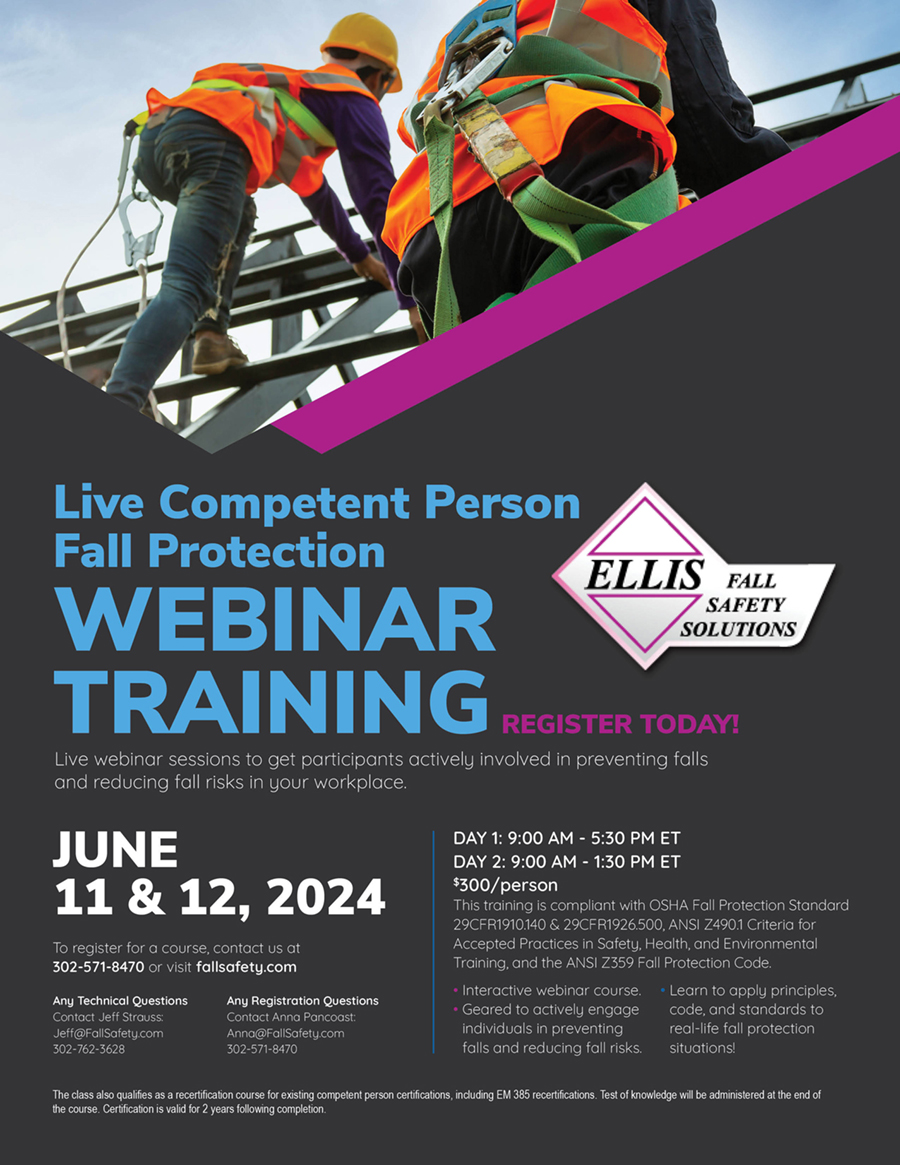Tip of the Week No. 262 – 10/26/09 – Roll Out
Roll-out is also possible when a lanyard or lifeline is wrapped around a structure and hooked back onto itself. The twisting and turning of the line under sudden stress against the gate can cause the snaphook to open, releasing the attachment very suddenly, and exposing the worker to serious injury.
See “Introduction to Fall Protection, 3rd Edition” page 184.
This book is an invaluable resource for every safety manager’s library. Click here to find out about ordering a copy. Order online now.
Tip of the Week No. 176 – 09/10/07 – Rope Grabs
A complete rope-grab system is crucial for safety. The lanyard, if any, must be short and designed as part of the system when used.
The rope-grab and lanyard must be tested dynamically with its lifeline, and the results analyzed, before a particular combination is utilized by any worker for protection to avoid unforeseen failure of the system.
There is no substitute for OSHA standards’ tes report prior to use of such systems.
See “Introduction to Fall Protection, 3rd Edition” page 174.
This book is an invaluable resource for every safety manager’s library. Click here to find out about ordering a copy. Order online now.
Tip of the Week No. 71 A – 05/16/05 – Max. Arresting Force
In most applications, the maximum arresting force (MAF) will be well defined since the lanyard itself will contain an in-line shock absorber that limits the force applied to the lanyard.
Based upon manufacturer’s testing data, this force, F, should range between 650 and 900 pounds per lanyard.
See “Introduction to Fall Protection, 3rd Edition” page 224.
How about ordering a copy of for yourself? Order online now.
Tip of the Week No. 81 A – 08/01/05 – Rope-grab Syst
A complete rope-grab system is crucial for safety. The lanyard, if any, must be short and designed as part of the system when used.
The rope-grab and lanyard must be tested dynamically with its lifeline, and the results analyzed, before a particular combination is utilized by any worker for protection to avoid unforeseen failure of the system.
There is no substitute for an OSHA standards’ test report prior to use of such systems.
See “Introduction to Fall Protection, 3rd Edition” page 174.
How about ordering a copy of for yourself? Order online now.
Tip of the Week No. 98 A – 01/09/06 – Lanyards
Most vertical arrest force problems can be minimized by the use of shock-absorbing mechanisms in the system and by using the manufacturer’s maximum arrest force specifications, while ensuring the capacity of the shock-absorbing lanyard is within limits (by properly limiting the length of the free fall).
See “Introduction to Fall Protection, 3rd Edition” page 222.
This book is an invaluable resource for every safety manager’s library. Click here to find out about ordering a copy. Order online now.
Tip of the Week No. 99 A – 01/16/06 – Lanyards
Lanyards should be the shock-absorbing type and integrally attached to the rope grab. This helps avoid the attachment of nonapproved and incorrect lanyards and diminishes or eliminates the opportunity for roll-out.
Cleaning instructions for hardware and lanyards should be available from the manufacturer. Solvents other than water should not be used to clean synthetic materials. A replacement lanyard program for integral grabs/lanyards is available from some manufacturers.
See “Introduction to Fall Protection, 3rd Edition” page 146.
This book is an invaluable resource for every safety manager’s library. Click here to find out about ordering a copy. Order online now.
Tip of the Week No. 81 – 08/29/05 – Lanyard maintenance
Outdoor exposure involves UV exposure, rain, ice, humidity, environmental gases, salt spray, dirt, oil, and other elements.
The organization’s policy should dictate that lanyards for aerial lifts should be replaced every 1-2 years, and no longer than every 3 years, a procedure that should be monitored by tagging or bar-coding.
See “Introduction to Fall Protection, 3rd Edition” page 325.
How about ordering a copy of for yourself? Order online now.
Australia & UK issue Health & Safety Alerts/Press Releases for the use of Twin Tails Lanyards
The Queensland, Australia department of industrial relations in November 2004 issued a Health & Safety Alert concerning the use of Twin Tail Lanyards after the death of a worker from a fall off a transmission tower.
The UK followed suit with the Health and Safety Executive issuing a press release in December 2004 warning of the same danger.
In the Australian incident it appears that the worker was wearing the twin tail lanyard (also known as a Y-lanyard, twin lanyard, double lanyard or two-legged lanyard) properly except that the unused leg passed under his buttocks, between his legs and was attached to a side D-ring.
The Health & Safety Alert recommends, pending the outcome of the investigation of the incident, the following interim measures:
1. The use of fall arrest systems are not the preferred method of managing the risks associated with climbing or moving along a structure. Engineering controls, such as the use of elevating work platforms, provide a higher degree of safety. Fall arrest systems should only be used when it is impracticable to use other safer work methods.
2. As an interim measure, the use of twin tail fall arrest lanyards should be discouraged. The use of such lanyards should only be considered if the manufacturer can prove (based on appropriate design and exhaustive testing) that its product will not impose unacceptable risk of injury to the user if the user inadvertently back-hooks the spare lanyard tail, in any possible configuration, to a side attachment D on the harness.
3. Users of any fall arrest equipment need to be trained in the proper use of the equipment and the equipment is (to) be used and maintained in strict accordance with guidelines provided by the manufacturer.
This alert was updated and then adopted on July 28, 2005.
Dr. Nigel Ellis warns of this possible danger on pages 100-103 in the Third Edition of his textbook “Introduction to Fall Protection” available for purchase on this site at Publications.
Further, Dr. Ellis recommends that because the hazard posed is of such catastrophic proportions that both the label and instructions use the term “DANGER!”. Dr. Ellis feels that “WARNING!” is inadequate, while “CAUTION!” is totally inappropriate.
Please select a category from the list below
- Aerial Lifts/Platforms
- Anchorage Points
- Calculations
- Construction Contracts
- Consulting
- Cranes
- Descent Devices
- Ellis Articles
- Ellis Presentations
- Equipment Maintenance
- Ergonomics/Human Factors
- Fall/Safety Statistics
- FP systems, programs
- Guardrails
- Harnesses, FP Equipment, HLL, SRL
- Hazards
- Holes/Pits
- Ladders
- Lanyards/Twin Tail Lanyards
- Misc.
- Nets
- New
- NIOSH
- OSHA News/Citations
- PFAS
- Rescue
- Roofs
- Ropes
- Safety Cases
- Safety Organizations
- Scaffolds
- Skylights
- Stairs
- Standard/Regulations
- Steel Erection
- Tanks
- Towers
- Training
- Tree Stands
- Trucks
- Tying Off
- Veterans of Safety
- Window Cleaners
- Workers Comp

